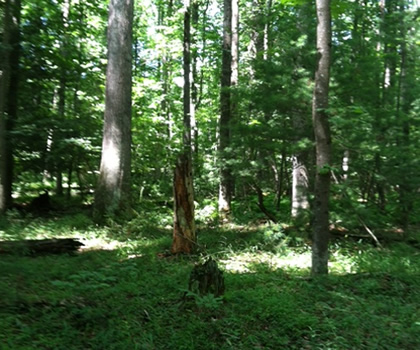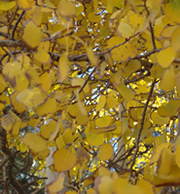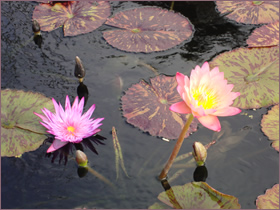
Spring, the sky rippled with geese,
But the green comes on slowly…”
From “March 16,” in Ted Kooser’s Winter Morning Walks
We have almost arrived at the end of March, and I have been observing its fluctuating energy throughout the month. What have you noticed this month? And, not just about the weather. How has your body been feeling? What has your energy been like? How have your moods been?
It is in the nature of March to reflect both the winter we have barely left and the spring that is promised. And each season has an energy that influences each individual depending upon his or her unique system.
A friend of mine with whom I spoke on one of March’s first sunny, warm days talked about feeling a sense of excitement without knowing why. I thought it funny she expressed it that way as I had been experiencing a similar sense of excitement. It was only when she mentioned this that I began to relate it to what was going on around us.
On a warm sunny early spring day there is a feeling of potential energy. My friend described it as “pregnant energy.” I had just noticed earlier in March how daffodils in my yard had pressed through the cold, hard earth, undeterred by snowfalls. They were growing greener and taller each day. “Pregnant energy” had pushed them toward the sun with a promise of blossoms, energy expressed in their opening. That pregnant energy is an energy of anticipation, excitement, a movement toward birth, renewal, fulfillment.
But even now as the vernal equinox is behind us, we can still feel the fluctuating energy of this season. Ted Kooser expresses this best in a short poem in which he speaks of “The pond, still numb from months of ice,” and juxtaposes it to the nearby “budding maple whose every twig is strung with beads of carved cinnabar, bittersweet red.” On a chilly, overcast March day, one perhaps even offering some wintry precipitation, we may relate more to ice barely cleared on the pond, or, for us living close to the Susquehanna, to ice barely cleared in the river. On such days the excitement of spring is dampened, and we feel a heavier, denser energy of winter not ready to let go to make room for spring.
Transition is often difficult. And the transition between the pregnant potential of a promised spring and weighty, internal energy of winter can bring a sense of agitation, confusion, or maybe even a sense of just being worn down.
One of the teachings of yoga that helps me with the fluctuating days of this seasonal transition is parinama vada, translated as “everything changes.” We learn that everything in the material world is in flux. It is the nature of things to be constantly changing, including ourselves, which we see as we grow from children, to adolescents, to young adults, to middle age, and to elders.
A regular yoga practice attunes us to the changes around us and within us. We learn to live in the present moment and accept that change and transitions are inevitable.
When the moody indecision of March plagues our bodies, energy and dispositions and disappoints our desire for a more consistent diet of pleasantly warm and sun, we can remind ourselves that it will change. That is assured.

 I love noticing seasonal changes and what those changes suggest about the rhythms of our lives. After all, the teachings of yoga stress finding balance in our lives, harmony with the world around us. Awareness of the seasons, the energies they possess, their influence on our lives, and the lessons they teach can lead us to live more healthfully and harmoniously with our environment.
I love noticing seasonal changes and what those changes suggest about the rhythms of our lives. After all, the teachings of yoga stress finding balance in our lives, harmony with the world around us. Awareness of the seasons, the energies they possess, their influence on our lives, and the lessons they teach can lead us to live more healthfully and harmoniously with our environment.  Autumn marks the transition to longer hours of darkness. While many of us welcome the beauty and cooling temperatures of the season, many start to anticipate, with some anxiety and dread, cold, snow, and barren landscapes.
Autumn marks the transition to longer hours of darkness. While many of us welcome the beauty and cooling temperatures of the season, many start to anticipate, with some anxiety and dread, cold, snow, and barren landscapes. Pranayama is the conscious regulation of the breath. Considered one of the most powerful tools to purify and discipline the body and mind, it is a subtle practice. To benefit, a practitioner should be knowledgeable in the application of pranayama as its misuse can create harm. That is why pranayama should be learned with the guidance of teacher skilled in its practice.
Pranayama is the conscious regulation of the breath. Considered one of the most powerful tools to purify and discipline the body and mind, it is a subtle practice. To benefit, a practitioner should be knowledgeable in the application of pranayama as its misuse can create harm. That is why pranayama should be learned with the guidance of teacher skilled in its practice. Yoga is about being present for our experience, whatever it might be – a yoga pose, a conversation with a friend, an emotion. This is not easy. Our minds tend to wander. We often judge our own behaviors and vulnerabilities and seek to escape from our discomfort.
Yoga is about being present for our experience, whatever it might be – a yoga pose, a conversation with a friend, an emotion. This is not easy. Our minds tend to wander. We often judge our own behaviors and vulnerabilities and seek to escape from our discomfort.